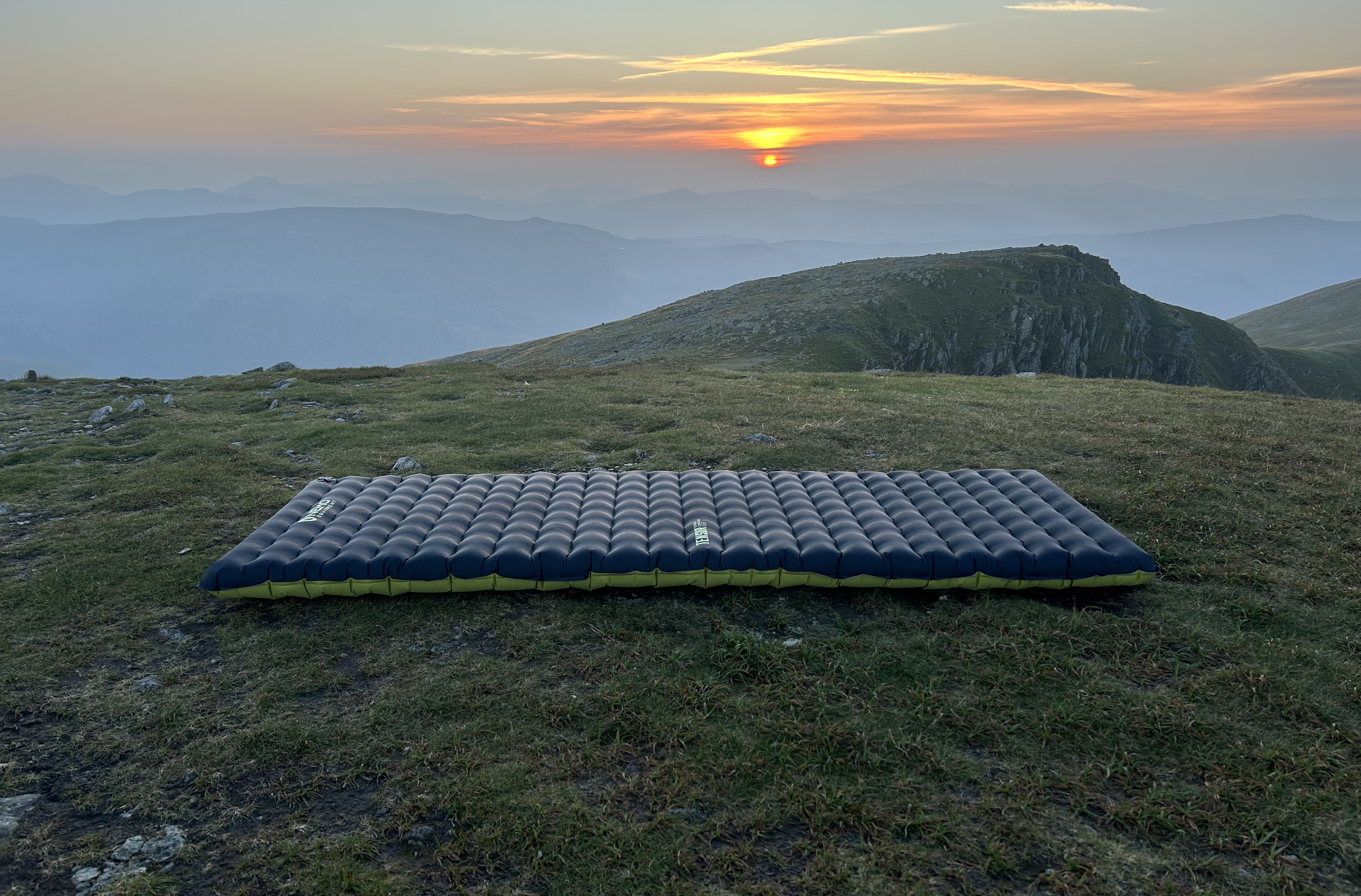
In 2002, Nemo Equipment’s founder Cam Brensinger spent a fraught night in a poorly designed bivvy on the side of Mount Washington. After absolutely zero sleep, he had something of an epiphany and resolved to launch his own company to do things better. Thus Nemo (or New England Mountain Outfitters) was born. Fast forward a couple of decades and today the brand has a strong reputation for quality and innovation in the camping gear world.
One of Nemo’s values that I really admire is that it doesn’t bring anything to market unless it’s doing something better than what’s already out there. For example, its Hornet Osmo Ultralight 3-Person Backpacking Tent, which I reviewed last summer, boasted cutting edge Osmo fabrics, representing a step forward in terms of sustainability.
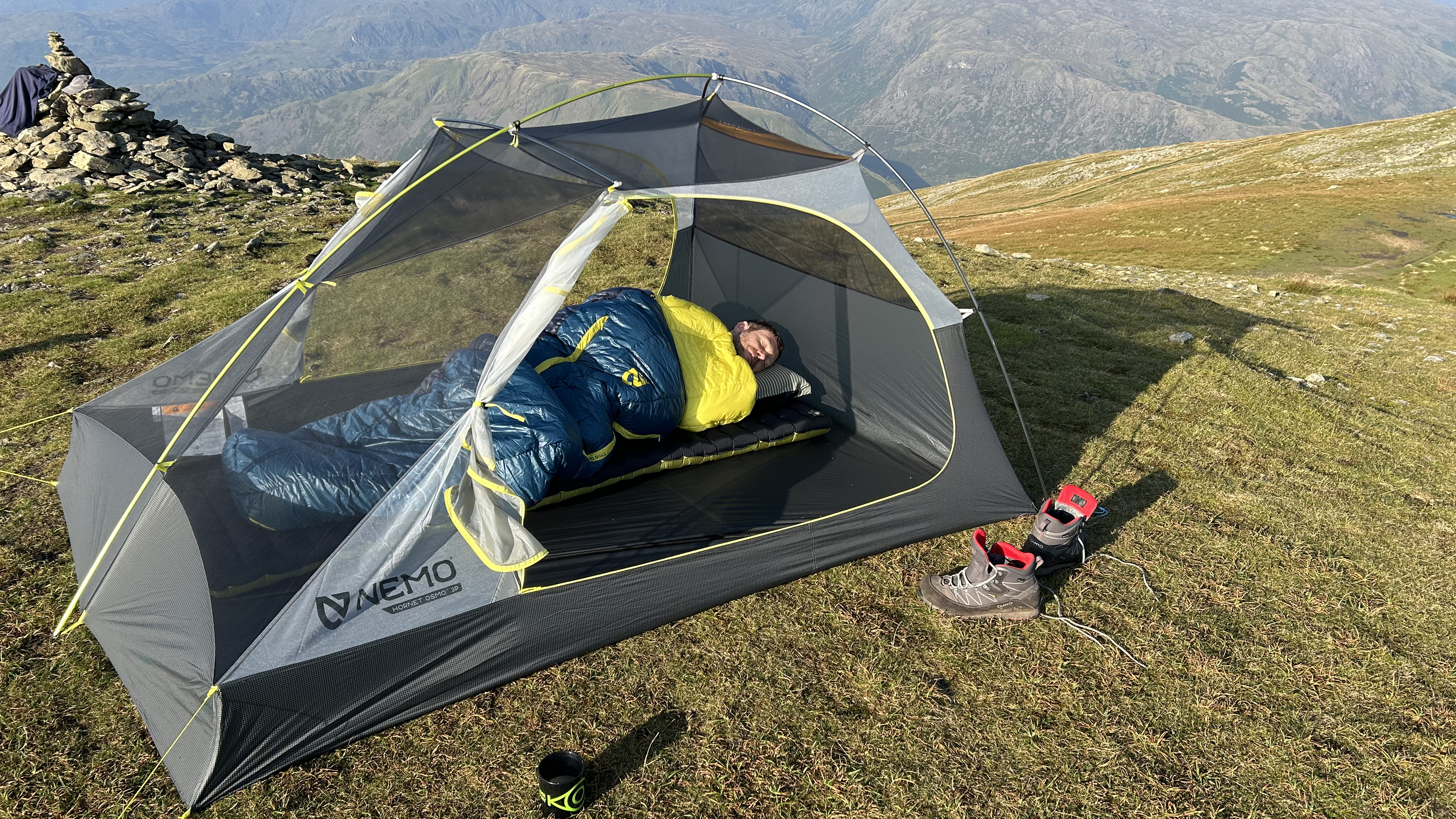
Now then, let's talk pads! Our Vermont-based camping adventurer Berne Broudy tested the Nemo Tensor Ultralight back in summer 2022 and rated it as the perfect backpacking camping pad. In fact, it sits in the number one spot of our best sleeping pads buying guide, at the time of writing. So, I was intrigued to see how this more advanced – and more expensive – pad from Nemo would fare against the British backcountry.
Meet the reviewer
First impressions
RRP: $259.99 (US) / £259.99 (UK)
Weight: 710g / 1.6 lb
Variants: Regular Wide, Regular Mummy, Regular, Long Wide
Dimensions: 182 x 66 cm / 72 x 26 in
Thickness: 8.9 cm / 3.5 in
Pack size: 27 x 11 cm / 10.5 by 4.5 in
R-value: 8.5
Compatibility: Car camping and backcountry camping all year round
Considering the Tensor EC’s stated R-value and suitability for winter, I was immediately impressed with its small pack size when it first arrived. Liberating it from the sack, I got a bit of surprise when the Pump Sack fell to the floor. This unexpected addition is a large sack designed to assist the inflation process and stops unwanted moisture getting into the pad. It took a bit of puff to get it fully inflated but after 3 or 4 rounds of the Pump Sack, the Tensor Extreme stretched out in all its insulated glory.
It’s a smart looking pad that feels premium and is wonderfully thick: 3.5 inches, to be precise. It feels luxurious when lined up against many sleeping pads I’ve tested down the years, which almost seem apologetic in comparison. It’s comfortable and nicely supportive, more so than many other backpacking pads.
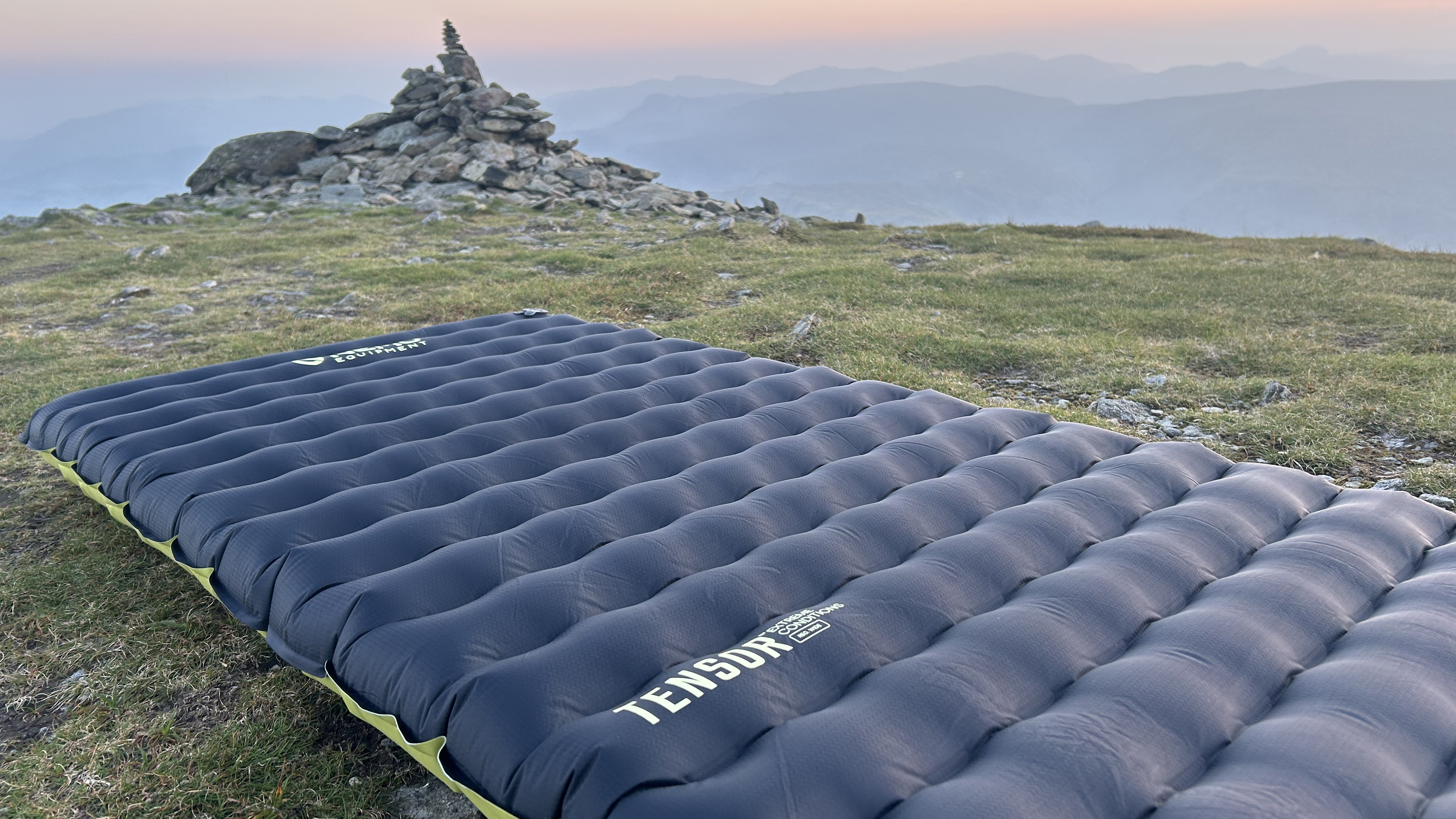
Features
So, what are the features that create such a comfortable pad? The Tensor EC boasts horizontal, trapezoidal baffles, which support 4 layers of Thermal Mirror film insulation, which utilizes a metallized film. The layers reflect body heat back, while fending off cold from the earth below – similar to metalized surface of emergency blankets. The result is a magnificent warmth-to-weight ratio that’s difficult to top, while Nemo says that it’s “impressively quiet”. There’s a bit of a crinkly sound as I put my weight on it or roll around on it, so it’s perhaps not a sleeping pad my tent mates would thank me for, although I’ve admittedly heard much worse.
Weighing in at 710g, it’s 170g heavier than the Tensor Ultralight, but you’d expect this for a pad that you can whip out for a spot of not-so-casual winter camping. Whereas the Tensor Ultralight boasted an R-value of 3.5, fine for 3-season use, the Tensor EC sports an R-value of 8.5, making it well suited to the gnarliest winter camps – hence the ‘Extreme Conditions’ in the name. In fact, Nemo state that it’s the first air pad to achieve a value above 8, so we’re dealing with some pretty bleeding edge design here.

Yet, it still works perfectly for summer camps, where sleeping pads are concerned, there’s no such thing as too much insulation from the ground. So, whereas a 4-season sleeping bag you’d take up K2 would be a tad too toasty for July beach camps, the Tensor EC can be your main sleeping pad all year round.
Fabrics wise, Nemo have used a tough, puncture-resistant 40D nylon for the bottom and a softer 20D nylon for the sleep surface. Both are bluesign approved, which means the fabrics meet internationally recognized sustainability standards, while there’s recycled material in there too. Bravo!
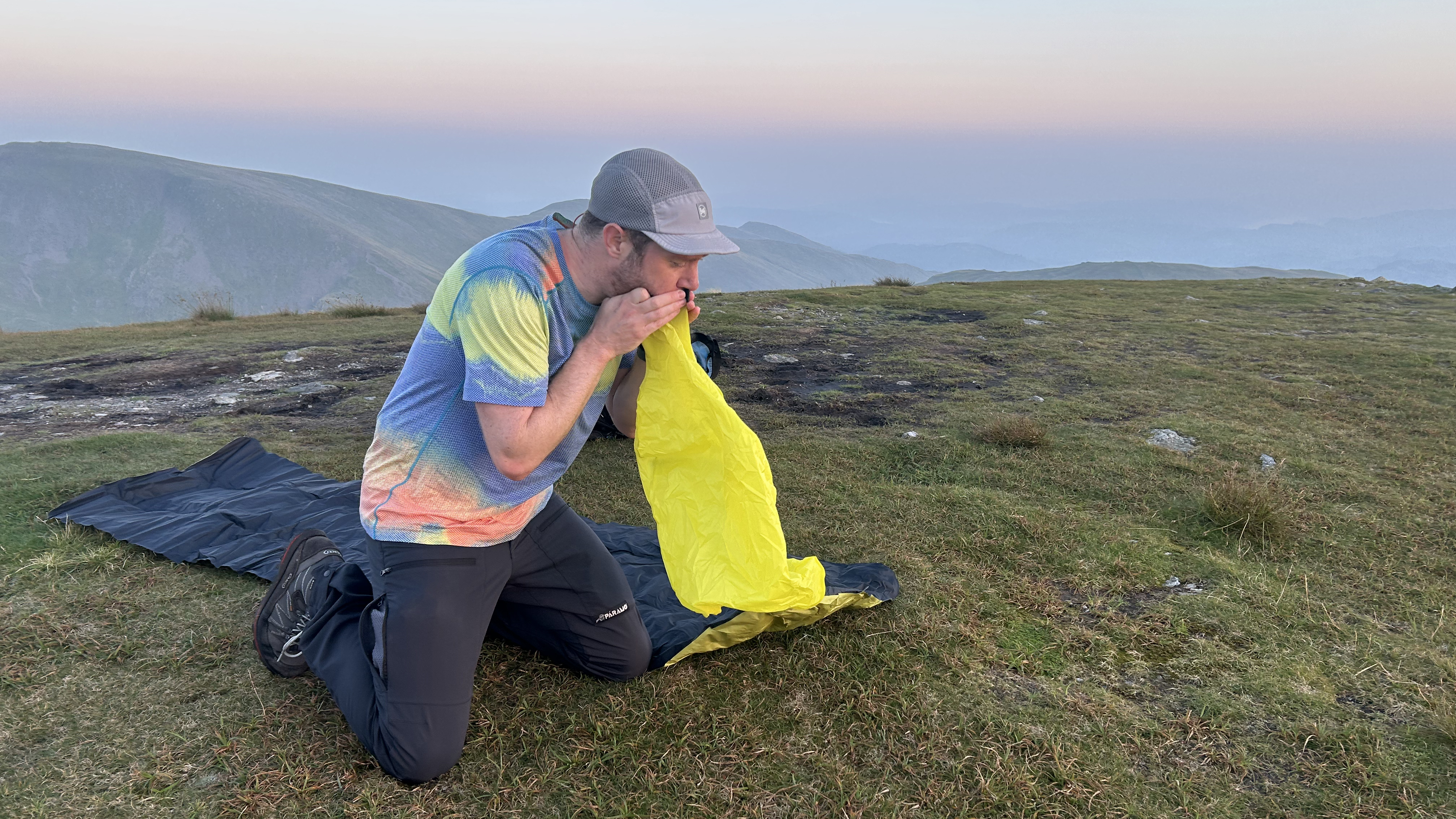
The air valve has been redesigned to have a zero-profile and perform better at the kind of low temperatures you may find yourself using the Tensor EC in. It boasts micro adjustability, meaning that you can open up the inflate tab and press it in to let a little air out if needed. You can open the valve up entirely using the deflate tab, basically pulling the plug out and enabling super speedy deflation.
To sync with your sleeping system, as well as your own dimensions, the Tensor EC is available in four sizes: Regular Wide (tested here), Regular Mummy, Regular, Long Wide. It also comes with a lifetime warranty for that lovely peace of mind on the trail.
In the backcountry
I took the Tensor EC on camping trips to England’s famous Lake District National Park in later summer, camping in the valley and – crucially given the pad’s credentials – enjoying summit wild camps too. The summit sleeps provided the colder conditions needed to see whether the pad delivered the goods when it came to insulation and, I can happily report, that it did.
Inflation is easy but it’s not without effort. There’s the option of the Pump Sack, which is filled around 3 or 4 times to achieve maximum inflation. I got this down to around 3-and-a-half minutes from flat to fully inflated. The other option is inflating directly at the pad’s valve but this means unwanted moisture will invariably get into the pad. Inflated this way, it took me around 2-and-a-half minutes.
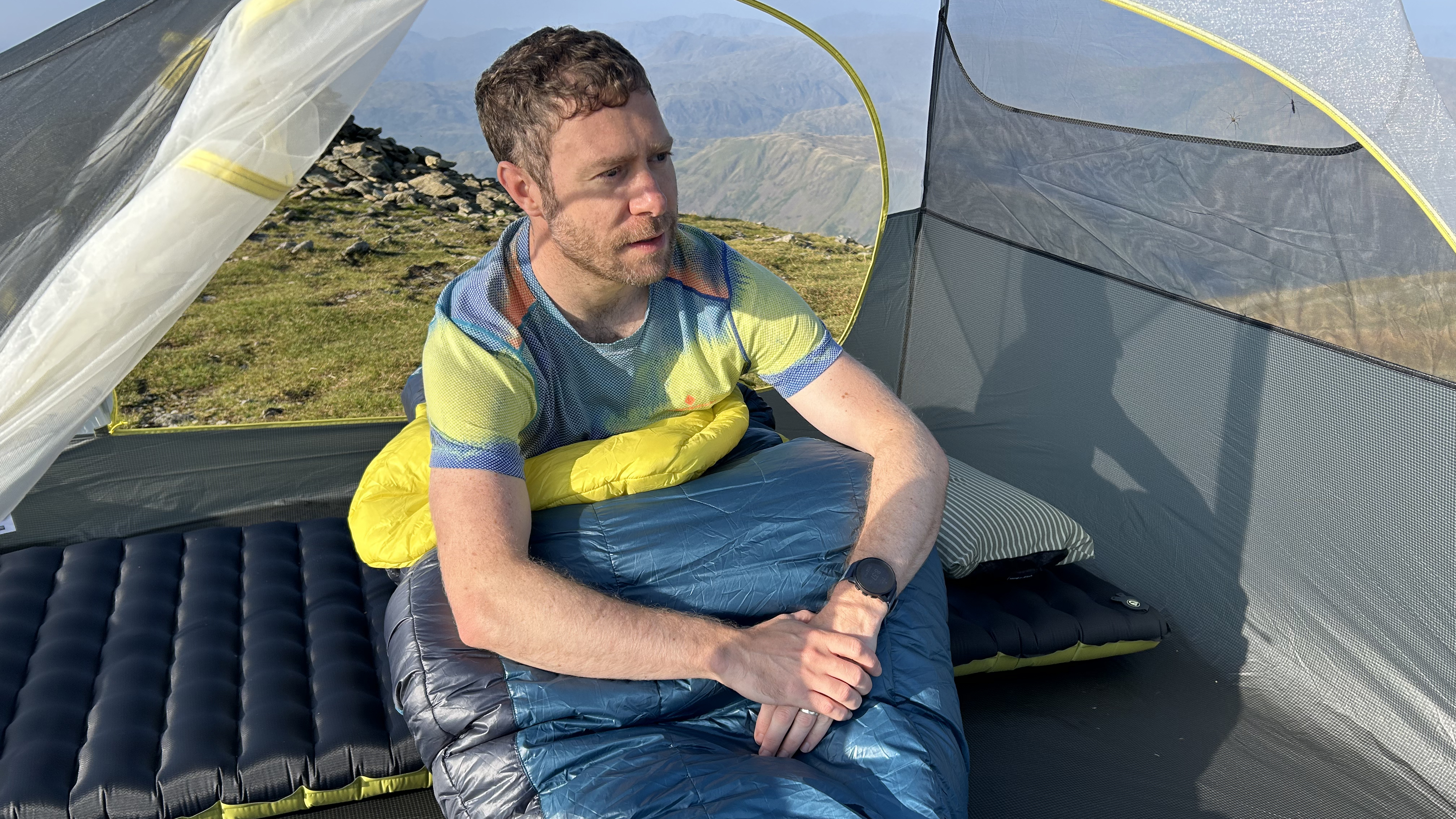
I like the way the valve allows me to personalize just how inflated I want the pad to be. A simple press lets a little air out, meaning that if I wanted a little less air in the pad, it’s easy to achieve. Attaching the Pump Sack is also a doddle.
I tested the Regular Wide version and found it offered some of the most comfortable backcountry sleeps I’ve ever enjoyed. Insulation is truly top notch, I felt wonderfully removed from the cold of the mountain beneath my groundsheet, making for a pleasant slumber.
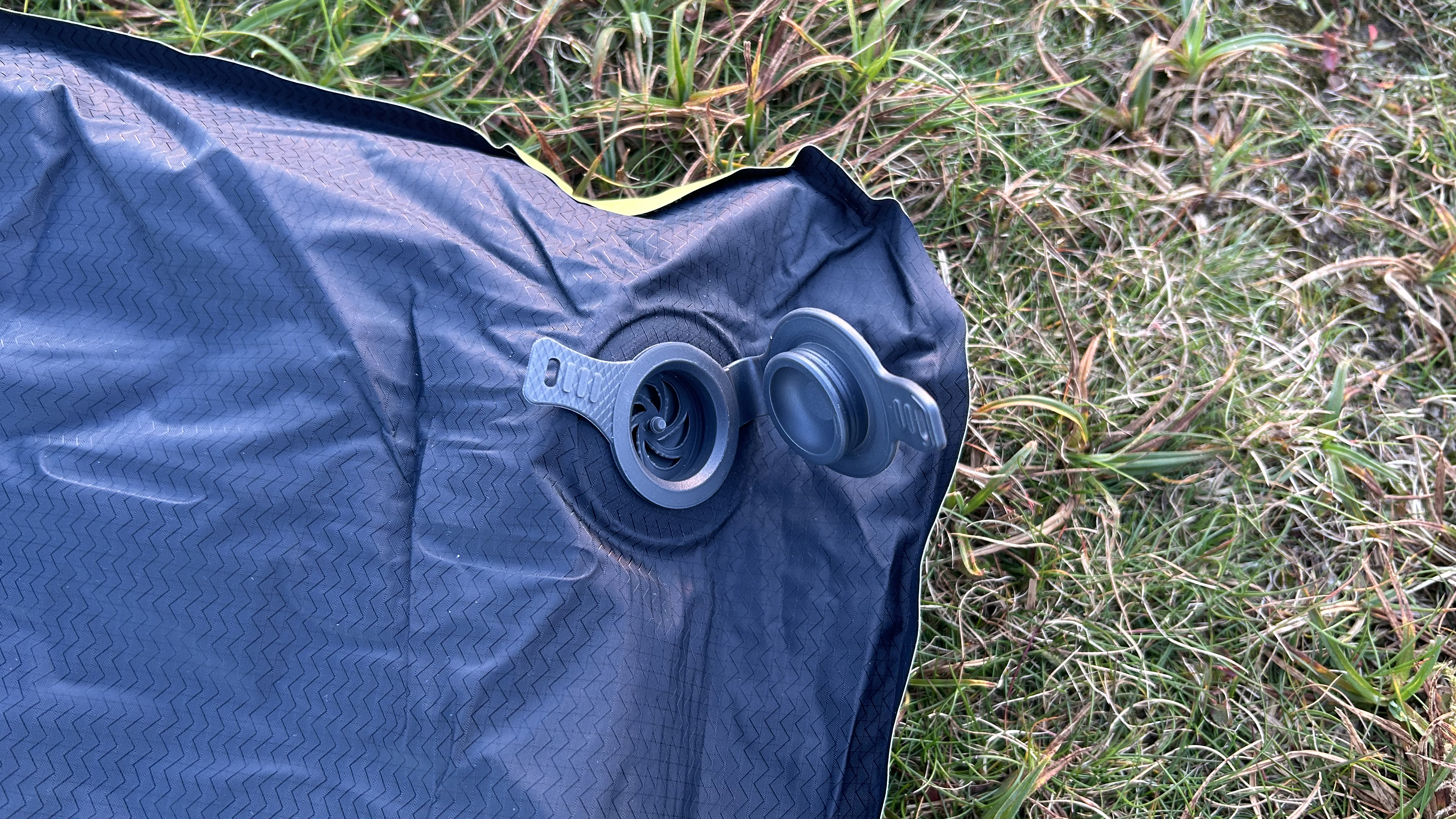
A minor gripe was that its surface provided very little friction when paired with Nemo’s own Fillo Backpacking and Camping Pillow. The inflatable pillow had a habit of slipping off the surface of the pad if anything other than mostly downward pressure was applied. I’d guess this could be solved by a more textured surface, either at the head of the pad or on both sides of the pillow – currently only one side of the pillow has such a surface and it’s clearly the side intended for one’s bonce.
When it comes to packing down, I was able to deflate and roll up the Tensor EC in less than a minute. The valve’s deflate tab basically allows me to pull the plug on its air and then it’s just a case of rolling it back up and stuffing it away. It was impressively small and light in my pack, especially given its insulating qualities.
All in all, a super pad that will work all year round. It's very expensive though and gram counting campers mainly eying up warm weather trips will be fine with something less insulating and also less pricey.







